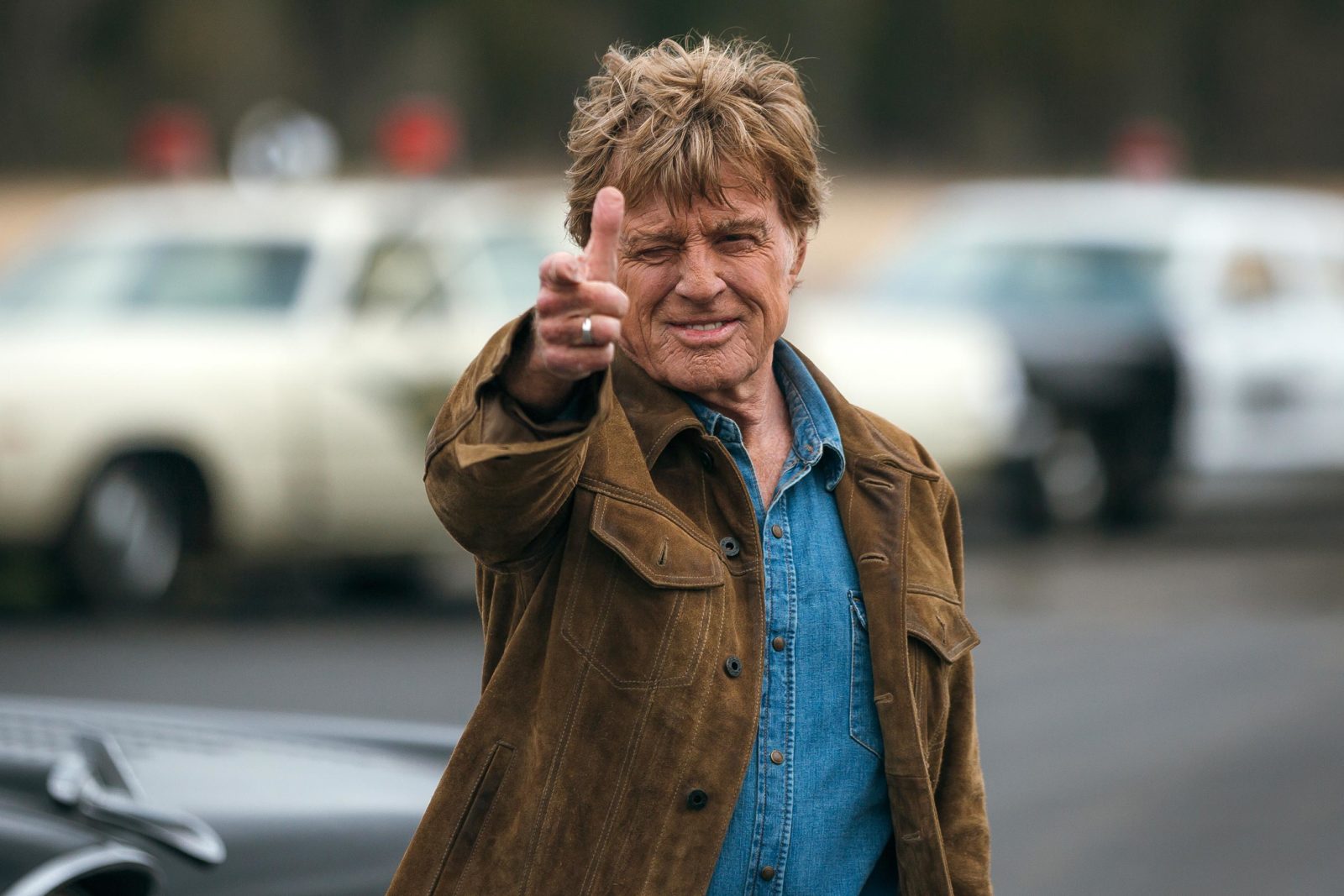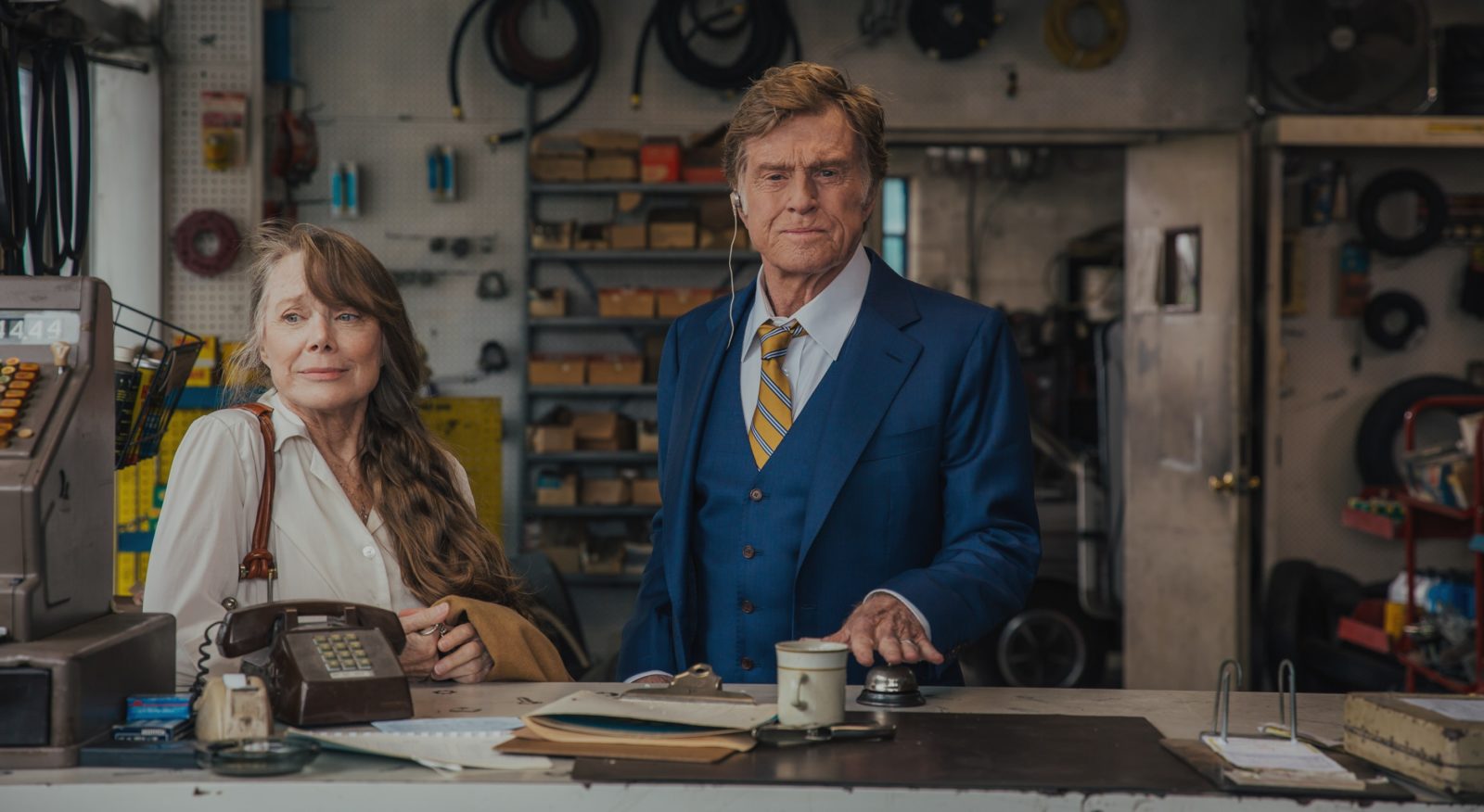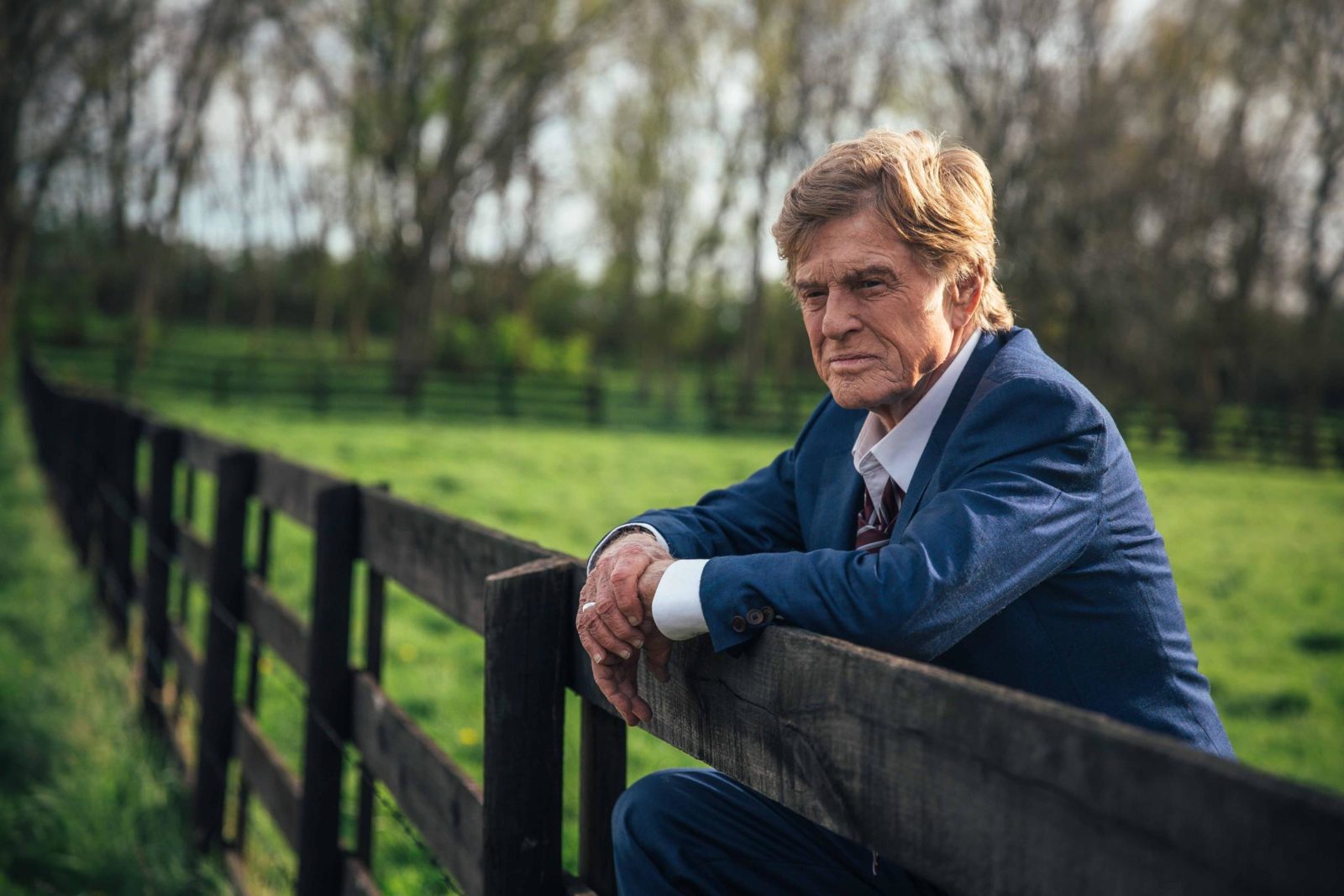Deep Focus: The Old Man & the Gun

The Old Man & the Gun, the affable, often funny, “mostly true” story of Forrest Tucker, an aging gentleman bandit in the 20th-century Southwest, has been promoted and widely accepted as an ideal sendoff for Robert Redford, its star and actual subject. In one of many retirement statements, Redford told Entertainment Weekly that he wants to go out as an actor on something “very upbeat and positive.”
If so, I wish he’d retired after working with the same writer-director, David Lowery, on the terrific Disney remake of Pete’s Dragon. The only way Lowery can disguise the sentimentality of this “adult” comedy-drama is by keeping it colloquial and low-key. He tosses in some moral ambiguity about Tucker’s collateral emotional damage, but not enough to complicate or deepen the message. In The Old Man & the Gun, Tucker’s character serves to prove that if a man stays true to his great loves—in this case, bank robberies and jail breaks—life can be a blast, even a dream.
The film is set in the early 1980s, when Tucker was in his sixties, a decade after a plasticized fantasy of beguiling lawlessness and freedom had turned Redford and Paul Newman into a platinum box-office team. Underneath this film’s hand-crafted period veneer, it peddles the same ersatz escapism. Diverting enough from scene to scene, it generates little momentum or staying power. The second and third acts evaporate from memory and leave no residue.
Lowery’s admirable indie credentials (Ain’t Them Bodies Saints, A Ghost Story) fit this film for a Fox Searchlight release. But why didn’t 20th Century Fox snap it up? The big studio financed and distributed Butch Cassidy and the Sundance Kid (1969) and had it shot (in part) on the lot at Stage 16 and at the 20th Century Fox Ranch. Lowery seems to view that jokey Western and the Depression caper film The Sting (1973) as Redford’s defining movies. (Even the credits echo Butch Cassidy’s quaint lettering.)
If you’re a Sundance head or Sting freak, you might go all the way with The Old Man & the Gun. Redford infuses the old clichés with a new soft-shoe panache, exploiting his furrowed face and seasoned air to imbue them with fleeting credibility. But if, like me, you grew up watching Redford go from his striking debut as the green soldier in War Hunt (1962) to his crackling partnership with director Michael Ritchie on The Candidate 10 years later, you’ll experience this film as a missed opportunity. It’s a broken-winged swansong.
What Redford does in his smash buddy films with Newman is an attractive, athletic form of modeling. It’s as if he’s picking perfect moments to flash trademark expressions, like his far-away stare or “captivating” smile. He’s got a slow-burning vitality in these blockbusters—he stays alert and makes sure his timing is on the money. But Newman and Redford are playing thespian tag: you can almost hear them say, “Now you’re it.”
The Old Man & the Gun suggests that Redford takes those hits to be his legacy and never appreciated his own radical acting talent. I come to praise Redford, not to bury him. I want to celebrate the groundbreaking performer forgotten in the wake of the ultra-handsome superstar.

Take his astonishing early performance as the bisexual Golden Age movie star Wade Lewis (or Lewis Wade) in Inside Daisy Clover (1965). We see an actor who is mesmerizingly conscious—but not self-conscious—about how many nuances the camera can pick up and how much power it gives a character when an actor doesn’t telegraph a secret (in this case, Wade’s homosexuality). As the buttoned-up ski prodigy in 1969’s Downhill Racer (like The Candidate, directed by Ritchie and produced by Redford’s Wildwood Enterprises), he shows a rare ability to physicalize emotion, especially when he leans on a car-horn to quiet an ex-lover who rankles him. Best of all, in The Candidate, as activist lawyer turned senatorial candidate Bill McKay, Redford creates a style so fresh it seems cutting-edge now. In newsreel-style sequences shot with handheld cameras and filled with loose, improvisational ensembles, Redford creates a hero/antihero who discovers his own crack media instincts even as the media swallow him up. Whether he’s connecting with youthful beach-lovers about a pet issue, pollution, or simply glad-handing a crowd of complacent Democrats, he’s a master of micro-emotions. He conveys empathy in an instant and feels it for a moment. With virtuoso understatement—without saying one audible word—Redford tells us all we need to know about McKay’s liaison with a campaign hanger-on. He’s unexpectedly hilarious at burlesquing his liberal gobbledygook in the backseat of a campaign car.
The Redford-Ritchie movies didn’t do sell-out business and rarely make it into highlight reels. (Downhill Racer scored a Criterion release in 2015, but The Candidate, the only film credited to “Redford-Ritchie Productions,” has yet to appear on Blu-ray and is out of print on DVD.) At the time, their overall cynicism was dispiriting, even to fans like me. But their exciting surfaces, and their electric grasp of contemporary life, provoked Redford into livewire acting. Under Sydney Pollack’s direction he delivered another terrific performance as Hubbell Gardiner, the echt-WASP writer, in 1973’s The Way We Were (more on that later). Too often, though, he became conventionally heroic (as in All the President’s Men) or suave, pictorial, and opaque (as in The Great Gatsby and Out of Africa).
Then, in the 21st century, Redford got his second and third winds. In movies like Spy Game (2001) and Captain America: The Winter Soldier (2014) he revives the canniness and energy that put him on the map. He rediscovers his ability to seem both shrewd and unrehearsed. In movies like An Unfinished Life (2005) and All Is Lost (2013) he sounds new notes of primal grief and desperation. And as Ike the Horse in Charlotte’s Web (2006) and a wily carpenter in Pete’s Dragon (2016), he embodies sentiment and wonder without getting all dewy about it. He renews himself as a character-actor star instead of a fading matinee idol.
So I did look forward to Lowery’s Old Man & the Gun, especially after Redford proclaimed it our last chance to sample his deceptively casual art. The opening is promising. Redford immediately slips into Tucker’s wrinkled skin and natty blue suit as he politely robs the American Bank in Bellmead, Texas. (All symbolic readings here are welcome.) Lowery reshapes David Grann’s 2003 true-crime story, which first appeared in The New Yorker, as a fictional romance, starting with Tucker’s initial getaway. He tends to pick targets close to highway on-ramps, and on the current highway’s shoulder he notices a jewel, or, rather, Jewel (Sissy Spacek), a wistfully vibrant widow peering under the hood of her overheating Chevy pickup. Tucker can’t fix the radiator, but he can take Jewel for pie and coffee at the Blue Jay Restaurant. His courtliness and mystery attract her—and his confession that he’s a bank robber intrigues her. Redford once again expresses how delicious it can be to keep a secret or leak selective parts of it. (He doesn’t tell her that his hearing aid is an earpiece for a police scanner.) Spacek, splendidly warm and buoyant, shows Jewel weighing Tucker’s honorable-outlaw act and deciding to love him anyway. As he continues to pull off one robbery after another, he becomes an obsession for a fictionalized Texas police detective, John Hunt (Casey Affleck), who faces a midlife crisis despite his loving wife (Tika Sumpter) and two adorable kids.

Unfortunately, every opportunity for pungent wit or complexity trails off into antihero worship. Jewel’s connection to Tucker, an elusive moonbeam of a lover, opens her eyes to the quiet desperation of her prior life. Hunt, who feels as if everything is futile at age 40, hopes to wipe away his professional failures by catching Tucker and the rest of the “Over the Hill Gang” (Danny Glover, Tom Waits). He begins to view his nemesis as a role model—a man who found his métier, practices it to perfection, and sticks with it.
We, too, are supposed to view Tucker as an artist who keeps the faith with his art and tries to minimize collateral damage. But how artful is Tucker’s MO? The secret to Tucker’s success is keeping it simple. As the real-life thief told The New Yorker, “Go right up to the manager. Say ‘sit down.’ Never pull the gun—just flash it. Tell him calmly you’re here to rob a bank and it better go off without a hitch. Don’t run from the bank unless you’re being shot at, ’cause it only shows something is going on. Just walk to the hot car, real calm, then drive to the cool car. Rev it up, and you’re gone.” It’s a model of efficiency, not artistry.
The outlaw-as-artist metaphor might have been more persuasive if Lowery had done more to dramatize Tucker’s skill at breaking out of confinement. He was an escape artist with a singular accomplishment: springing himself and two buddies from San Quentin right before his Texas-Oklahoma bank spree. They scrounged up the parts for a 14-foot getaway kayak—the Rub-A-Dub-Dub—and assembled it in the prison lumber shop, then pretended to be members of the Marin Yacht Club as they sailed into San Francisco Bay. Too bad the depiction of this feat is relegated to one piece in a too-brief montage of successful and attempted breakouts.
The Old Man & the Gun proves to be amiable to a fault. Waits and Glover generate a gnarly humor as Tucker’s cohort; Waits tells a black-comic “Why I Hate Christmas” story that rivals Phoebe Cates’s in Gremlins. But we never climb far enough inside their partnership to gauge whether either of them would ever blow the whistle on Tucker. Lowery tries to even up the ethical balance sheet by showing bank tellers in tears and by getting Tucker’s daughter (Elisabeth Moss) to explain that he wreaked havoc on her mother’s life. But these scenes are just moral fig leaves. They don’t provide a subtle counter-narrative about the side effects of crime.
The film squanders the potential of the Tucker-Jewel affair. We read his silences way better than she does: we know that when he clams up he’s ready to rob banks. Redford’s reticence becomes monotonous and eventually verges on smug. There’s a need for more variety or push and pull, like the see-sawing emotions of Hubbell Gardiner and Katie Morosky (Barbra Streisand) that made The Way We Were so engrossing. Lowery fails to concoct bits of business that carry a sweet erotic charge, like Hubbell convincing Katie to let him tie her unlaced shoe, turning the simple phrase, “Put your foot here,” into an elegant come-on. Tucker shoplifting a pricey bracelet for Jewel doesn’t cut it as a seductive ploy. Lowery knows how to echo The Sting, with Tucker signaling to his guys with a tap on the side of his nose. But the director doesn’t give Spacek the bittersweet equivalent of Streisand brushing the hair off Redford’s forehead.
What bugs me about The Old Man & the Gun—and this goes for Grann’s article, too—is that when people first hear the protagonist’s name, no one asks, “Forrest Tucker? Like the star of F Troop?” But the old-time actor has gotten his revenge. Forrest Tucker’s first movie, William Wyler’s The Westerner, is a far greater Western than The Old Man & the Gun.
Michael Sragow is a contributing editor to Film Comment and writes its Deep Focus column. He is a member of the National Society of Film Critics and the Los Angeles Film Critics Association, and a contributor to the Criterion Collection.







